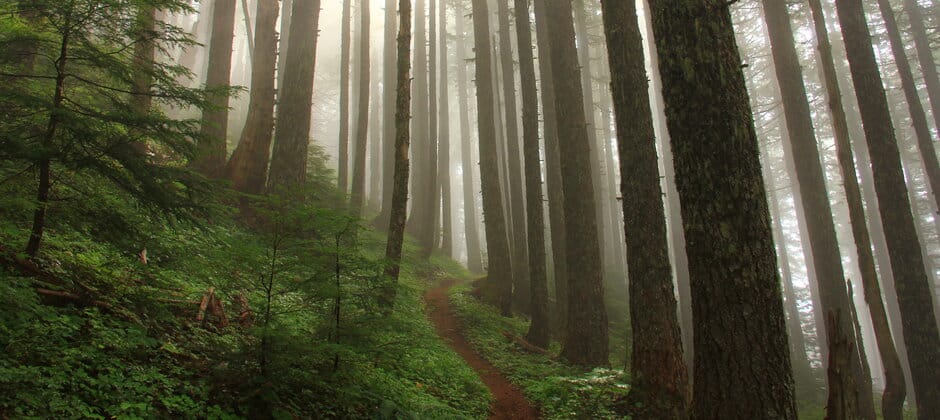Share this article
Advocacy groups urge more protection for old-growth forest species
Advocacy groups have filed lawsuits against the U.S. Fish & Wildlife Service over its recent decisions regarding Endangered Species Act protections for two forest-dwelling species of the Pacific Northwest — the red tree vole and northern spotted owl.
The groups argue that the red tree vole merits ESA listing, and the northern spotted owl should be uplisted from threatened to endangered and have its previous critical habitat designations restored.
Both species inhabit old-growth forests of the Pacific Northwest, and habitat management for one species usually benefits the other. Because of their reliance on old intact forests with large trees, both the red tree vole (Arborimus longicaudus) and northern spotted owl (Strix occidentalis caurina) are sensitive to habitat loss and fragmentation caused by timber harvesting, wildfire and land conversion. Northern spotted owls are listed as threatened under the Endangered Species Act, and red tree voles were previously a candidate for listing.
Red tree voles
Red tree voles are a strictly arboreal, or tree-dwelling, mammal found in the humid coniferous forests of western Oregon and Northern California. They have small home ranges, cannot disperse far and prefer to nest in large trees in the forest interior, making them especially vulnerable to habitat fragmentation.
A genetically distinct population of red tree voles in western Oregon has declined significantly and appears to be uncommon or absent in much of its former range. This population became a candidate for ESA protection in October, 2011 when the USFWS determined that the population warranted ESA listing but was precluded by higher-priority species. Being “warranted but precluded” from ESA listing means that while scientific data supports listing, the USFWS doesn’t list the species because it must prioritize its limited resources for other species. Instead, the species becomes a candidate for listing, and its status is periodically reevaluated.
In the years following that decision, the agency reaffirmed the status of the population as a candidate for listing six different times, most recently in October, 2019. Two months later, in December, 2019, the USFWS determined that listing the population was not warranted after all and removed red tree voles from the list of candidate species. The decision was based on new habitat modeling that indicated a greater availability of suitable habitat than previously thought.
Seeking a review of this decision, a coalition of advocacy groups including the Center for Biological Diversity, Cascadia Wildlands, Oregon Wild and Audubon Society of Portland has filed a lawsuit. The groups argue that the change in USFWS’ conclusion is arbitrary, inconsistent with its previous findings and does not follow the best available science. In the lawsuit, the groups ask the court to require the USFWS to rescind the not-warranted decision, perform another analysis and issue a new listing determination.
Northern spotted owls
A separate lawsuit from the Center for Biological Diversity seeks greater ESA protections for northern spotted owls and nine other species. The USFWS previously declined to uplist the northern spotted owl from threatened to endangered because the change, though warranted by recent population declines, was precluded by other higher-priority demands. The advocacy group argues that the USFWS has not adequately justified the decision to preclude uplisting and asks the court to order the USFWS to immediately grant endangered status to the species.
Another lawsuit seeks to restore protections for millions of acres of owl habitat. The USFWS recently delayed and started a review of a final rule that reduced critical habitat designations for the owl. In their lawsuit, advocacy groups including the Audubon Society of Portland, Center for Biological Diversity and Sierra Club ask the court to order the USFWS to vacate the rule and reinstate the previous critical habitat designation.
Read TWS’ Position Statements on the U.S. Endangered Species Act, Threatened and Endangered Species in the U.S., and Management of Old-growth Forest on the Pacific Coast of North America.
Header Image: Advocacy groups argue for greater Endangered Species Act protections for red tree voles and northern spotted owls, which inhabit old-growth forests of the Pacific Northwest. Credit: BLM Oregon & Washington








